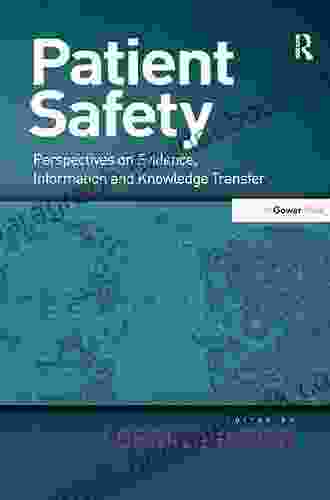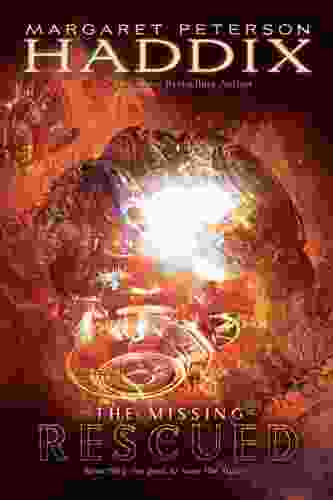Perspectives on Evidence, Information, and Knowledge Transfer

5 out of 5
| Language | : | English |
| File size | : | 10961 KB |
| Text-to-Speech | : | Enabled |
| Screen Reader | : | Supported |
| Enhanced typesetting | : | Enabled |
| Word Wise | : | Enabled |
| Print length | : | 399 pages |
Evidence, information, and knowledge are essential for decision-making. In order to make informed decisions, we need to have access to reliable evidence, understand the information presented to us, and be able to apply our knowledge to the situation at hand.
The transfer of evidence, information, and knowledge is a complex process. There are a number of challenges that can arise during knowledge transfer, including:
- Lack of awareness: People may not be aware of the evidence, information, or knowledge that is available.
- Lack of access: People may not have access to the evidence, information, or knowledge that they need.
- Lack of understanding: People may not understand the evidence, information, or knowledge that they encounter.
- Lack of relevance: People may not see the relevance of the evidence, information, or knowledge to their own work.
- Lack of trust: People may not trust the source of the evidence, information, or knowledge.
Despite these challenges, there are a number of things that can be done to improve knowledge transfer. These include:
- Raising awareness: Make people aware of the evidence, information, and knowledge that is available.
- Improving access: Make the evidence, information, and knowledge easily accessible to people.
- Simplifying understanding: Present the evidence, information, and knowledge in a clear and concise way.
- Demonstrating relevance: Show people how the evidence, information, and knowledge can be applied to their own work.
- Building trust: Establish trust with people by providing accurate and reliable information.
Types of Evidence
There are many different types of evidence, including:
- Scientific evidence: This type of evidence is based on the scientific method. It is considered to be the most reliable type of evidence.
- Anecdotal evidence: This type of evidence is based on personal experience. It is considered to be less reliable than scientific evidence.
- Expert opinion: This type of evidence is based on the opinion of an expert. It is considered to be less reliable than scientific evidence, but more reliable than anecdotal evidence.
- Documentary evidence: This type of evidence is based on written documents. It is considered to be less reliable than scientific evidence, but more reliable than anecdotal evidence.
The type of evidence that you use will depend on the purpose of your decision-making. If you are making a decision that has a high level of risk, you will need to use the most reliable type of evidence available. If you are making a decision that has a low level of risk, you may be able to use less reliable types of evidence.
The Role of Information in Knowledge Transfer
Information is essential for knowledge transfer. It is the raw material that is used to create knowledge. Information can be found in a variety of sources, including:
- Books: Books are a great source of information on a wide range of topics.
- Articles: Articles are shorter than books and focus on a specific topic.
- Websites: Websites are a great source of information on a wide range of topics.
- Videos: Videos can be a great way to learn about a specific topic.
- Training courses: Training courses can provide you with the opportunity to learn about a new topic from an expert.
The type of information that you use will depend on the purpose of your knowledge transfer. If you are trying to learn about a new topic, you may want to start with books or articles. If you are trying to learn a new skill, you may want to take a training course.
The Challenges of Knowledge Transfer
There are a number of challenges that can arise during knowledge transfer. These challenges include:
- Lack of awareness: People may not be aware of the knowledge that is available.
- Lack of access: People may not have access to the knowledge that they need.
- Lack of understanding: People may not understand the knowledge that they encounter.
- Lack of relevance: People may not see the relevance of the knowledge to their own work.
- Lack of trust: People may not trust the source of the knowledge.
Despite these challenges, there are a number of things that can be done to improve knowledge transfer. These include:
- Raising awareness: Make people aware of the knowledge that is available.
- Improving access: Make the knowledge easily accessible to people.
- Simplifying understanding: Present the knowledge in a clear and concise way.
- Demonstrating relevance: Show people how the knowledge can be applied to their own work.
- Building trust: Establish trust with people by providing accurate and reliable information.
Tips for Effective Knowledge Transfer
Here are some tips for effective knowledge transfer:
- Start with a clear understanding of the purpose of your knowledge transfer. This will help you to determine the type of evidence, information, and knowledge that you need.
- Identify your target audience. This will help you to tailor your knowledge transfer to their needs.
- Choose the right communication channels. There are a variety of communication channels that you can use to transfer knowledge, such as written materials, presentations, and training courses.
- Make your knowledge transfer clear and concise. People are more likely to remember and understand information that is presented in a clear and concise way.
- Provide opportunities for feedback. This will help you to ensure that your knowledge transfer is effective.
Evidence, information, and knowledge are essential for decision-making. The transfer of evidence, information, and knowledge is a complex process, but there are a number of things that can be done to improve it. By following the tips outlined in this article, you can help to ensure that your knowledge transfer is effective.
5 out of 5
| Language | : | English |
| File size | : | 10961 KB |
| Text-to-Speech | : | Enabled |
| Screen Reader | : | Supported |
| Enhanced typesetting | : | Enabled |
| Word Wise | : | Enabled |
| Print length | : | 399 pages |
Do you want to contribute by writing guest posts on this blog?
Please contact us and send us a resume of previous articles that you have written.
 Book
Book Page
Page Chapter
Chapter Story
Story Genre
Genre Paperback
Paperback Magazine
Magazine Newspaper
Newspaper Paragraph
Paragraph Sentence
Sentence Shelf
Shelf Glossary
Glossary Foreword
Foreword Synopsis
Synopsis Codex
Codex Tome
Tome Bestseller
Bestseller Classics
Classics Library card
Library card Narrative
Narrative Biography
Biography Autobiography
Autobiography Memoir
Memoir Reference
Reference Dictionary
Dictionary Narrator
Narrator Librarian
Librarian Catalog
Catalog Stacks
Stacks Archives
Archives Lending
Lending Academic
Academic Rare Books
Rare Books Special Collections
Special Collections Literacy
Literacy Study Group
Study Group Thesis
Thesis Dissertation
Dissertation Storytelling
Storytelling Textbooks
Textbooks Nelson C Nye
Nelson C Nye Ina Koys
Ina Koys Kenneth W Lindsay
Kenneth W Lindsay Hindol Sengupta
Hindol Sengupta Harry Bolick
Harry Bolick Steven E Siry
Steven E Siry Larry Hyslop
Larry Hyslop Susan M Swearer
Susan M Swearer Christine Haynes
Christine Haynes Charles Tilly
Charles Tilly David Fagan
David Fagan Candice Adewole
Candice Adewole Susan Rubin Suleiman
Susan Rubin Suleiman Kathleen Fuller
Kathleen Fuller Suzanne Lang
Suzanne Lang Todd Tarpley
Todd Tarpley Dylan Rodriguez
Dylan Rodriguez Eric Sean Crawford
Eric Sean Crawford Wes Linden
Wes Linden Barry Friedman
Barry Friedman
Light bulbAdvertise smarter! Our strategic ad space ensures maximum exposure. Reserve your spot today!
 William WordsworthFollow ·7.3k
William WordsworthFollow ·7.3k Harry HayesFollow ·14.4k
Harry HayesFollow ·14.4k Frank MitchellFollow ·17.2k
Frank MitchellFollow ·17.2k Xavier BellFollow ·7.7k
Xavier BellFollow ·7.7k Dwight BlairFollow ·5.8k
Dwight BlairFollow ·5.8k Marcus BellFollow ·2.8k
Marcus BellFollow ·2.8k Luke BlairFollow ·16.7k
Luke BlairFollow ·16.7k Everett BellFollow ·14.7k
Everett BellFollow ·14.7k

 Ricky Bell
Ricky BellThe Marriage: An Absolutely Jaw-Dropping Psychological...
In the realm of...

 Ray Blair
Ray BlairDiscover the Enchanting Charm of Budapest and Its...
Nestled in the heart of...

 Tyrone Powell
Tyrone PowellHuddle: How Women Unlock Their Collective Power
Huddle is a global movement that empowers...

 Grayson Bell
Grayson BellThe Coin Story of the Holocaust: A Symbol of Hope and...
In the depths of the...

 Virginia Woolf
Virginia WoolfFolklore Performance and Identity in Cuzco, Peru: A...
Nestled amidst...

 Dylan Mitchell
Dylan MitchellThe Enduring Love Story of Héloïse and Abélard: A Tale of...
An Intellectual Passion In the heart of...
5 out of 5
| Language | : | English |
| File size | : | 10961 KB |
| Text-to-Speech | : | Enabled |
| Screen Reader | : | Supported |
| Enhanced typesetting | : | Enabled |
| Word Wise | : | Enabled |
| Print length | : | 399 pages |












